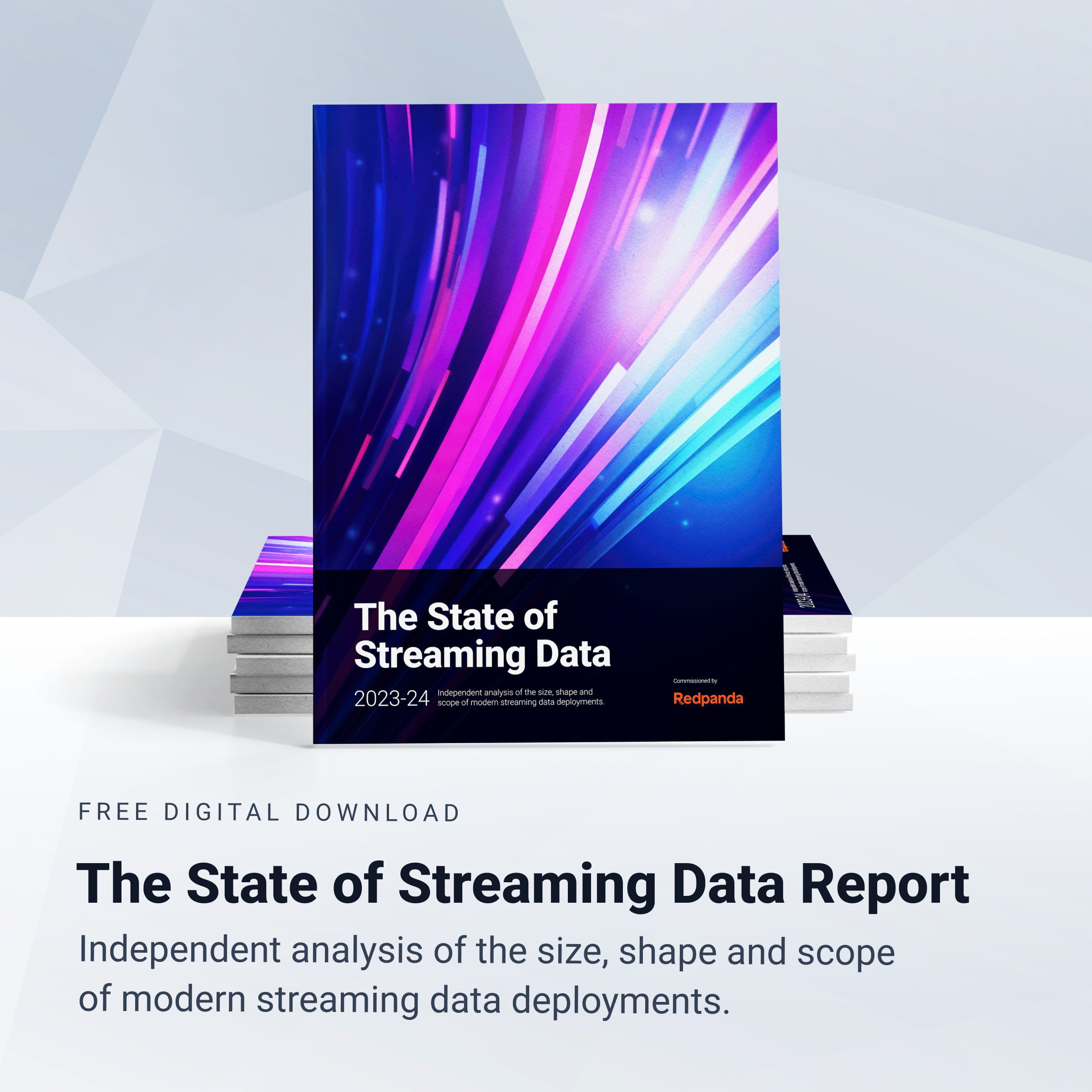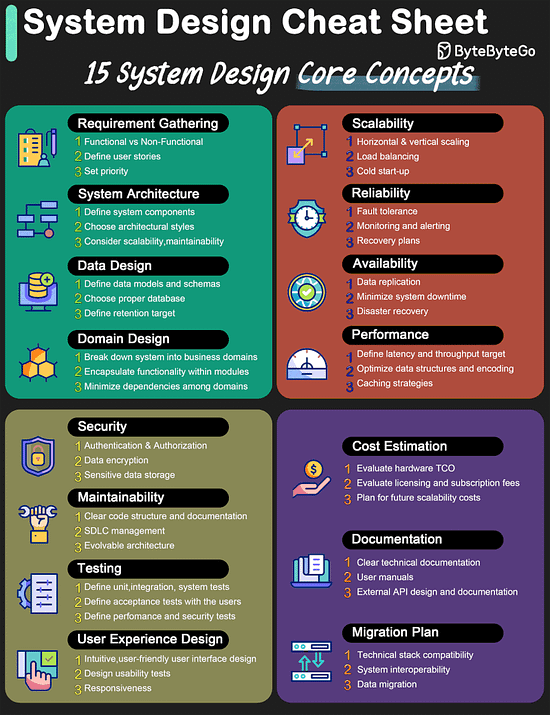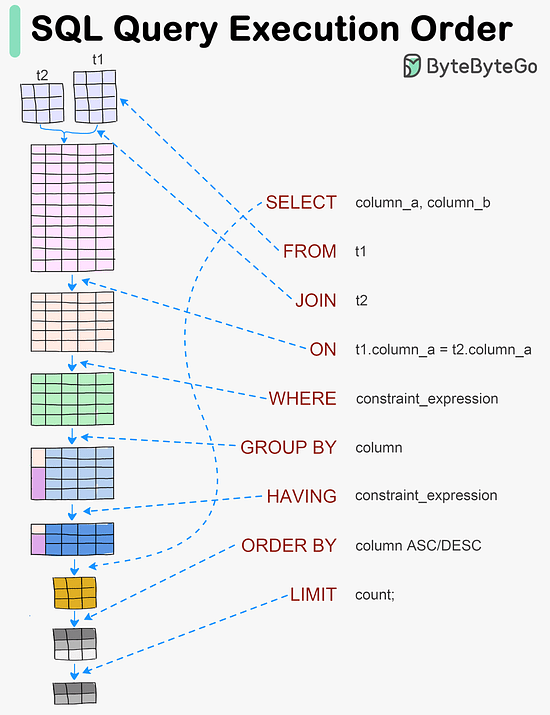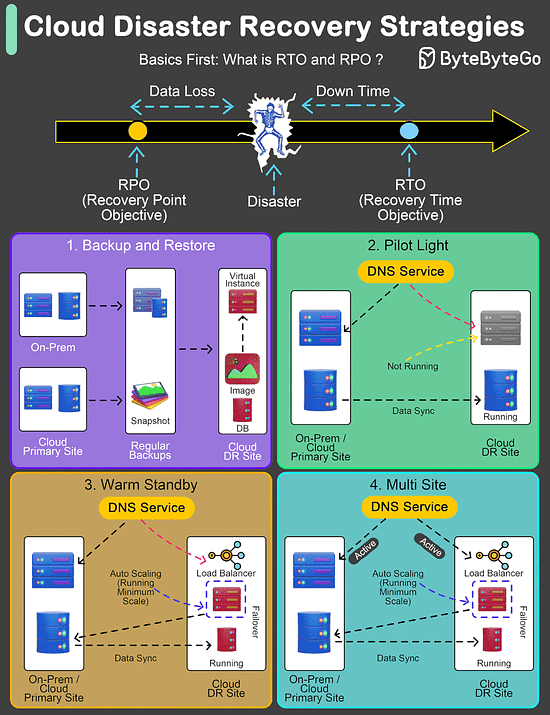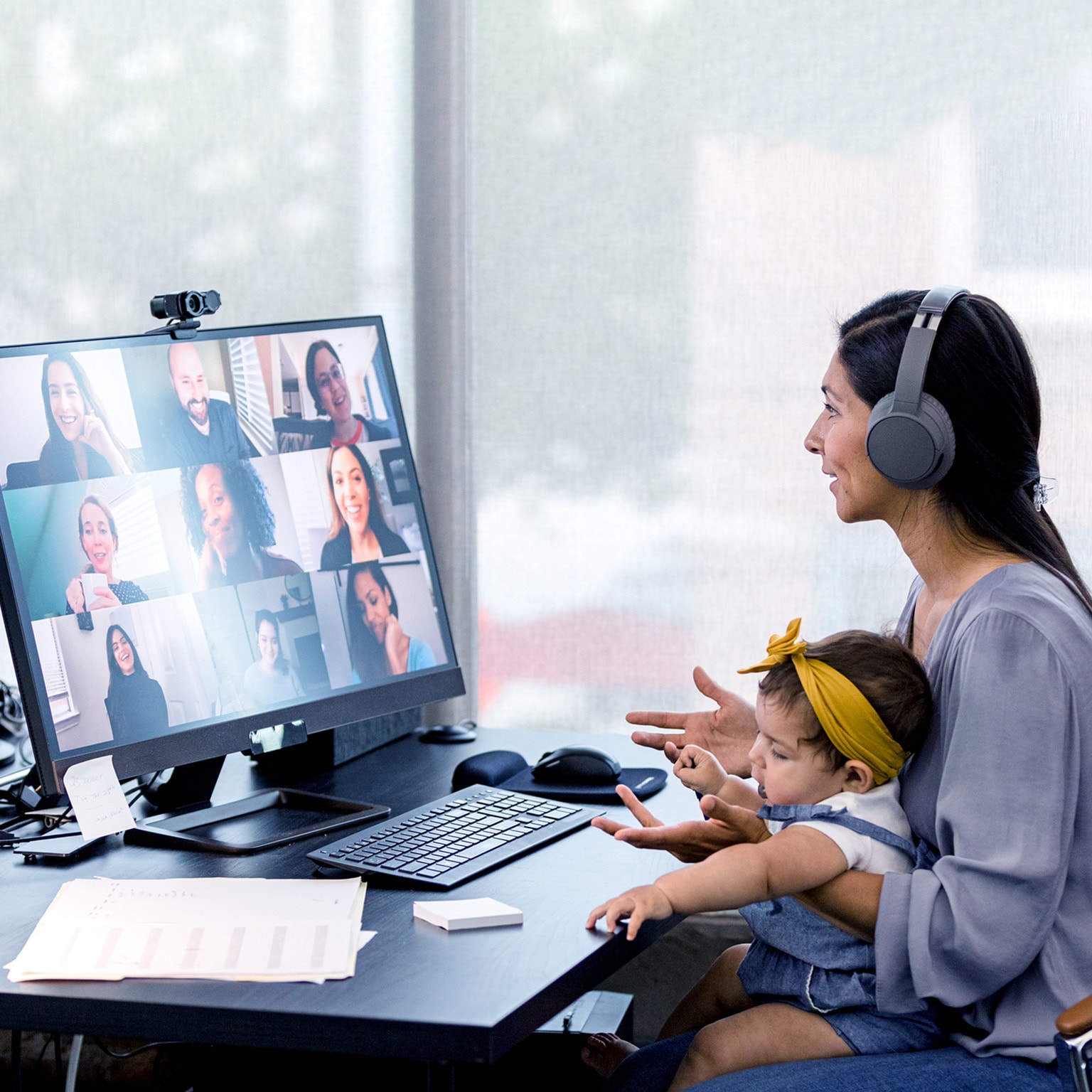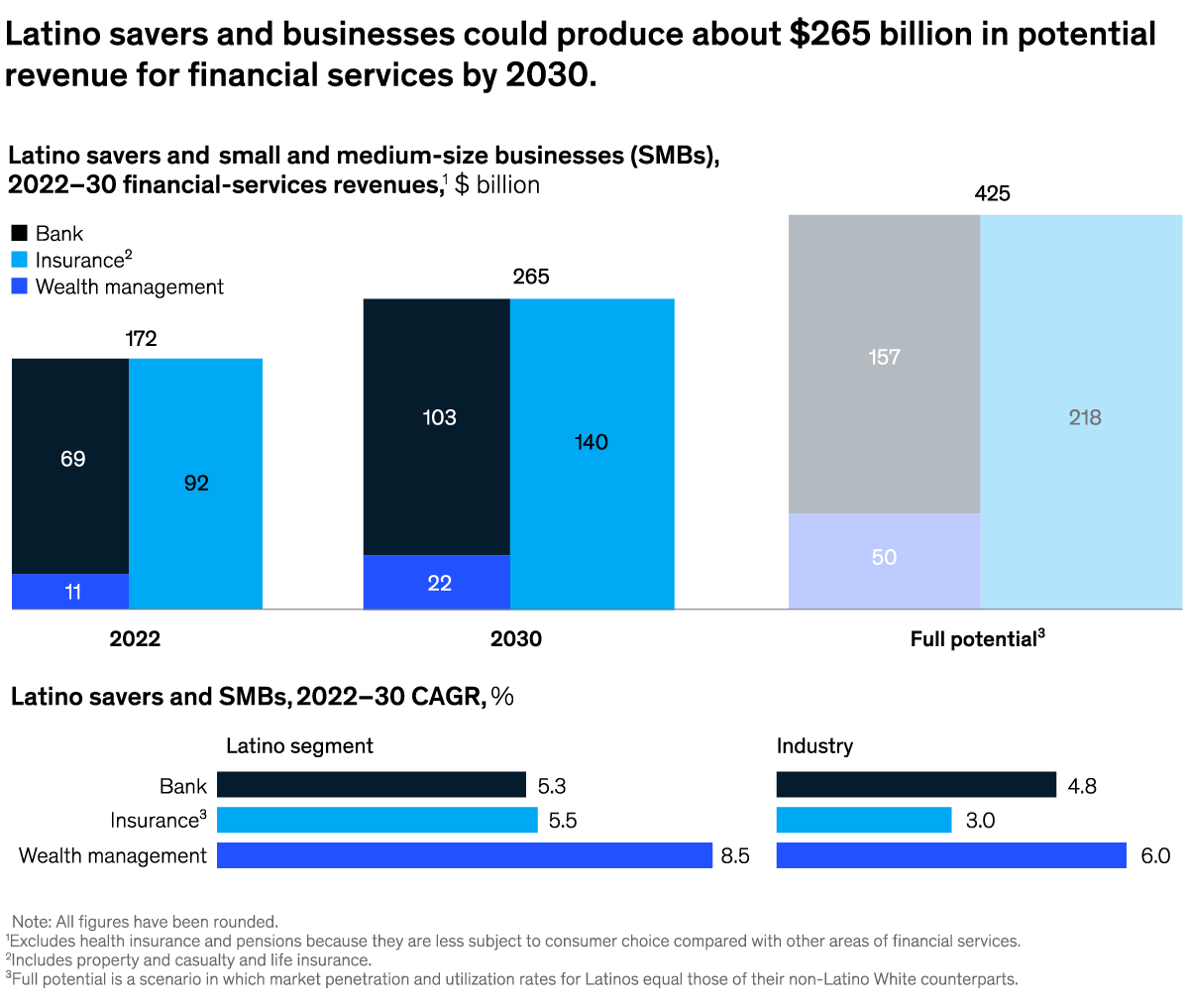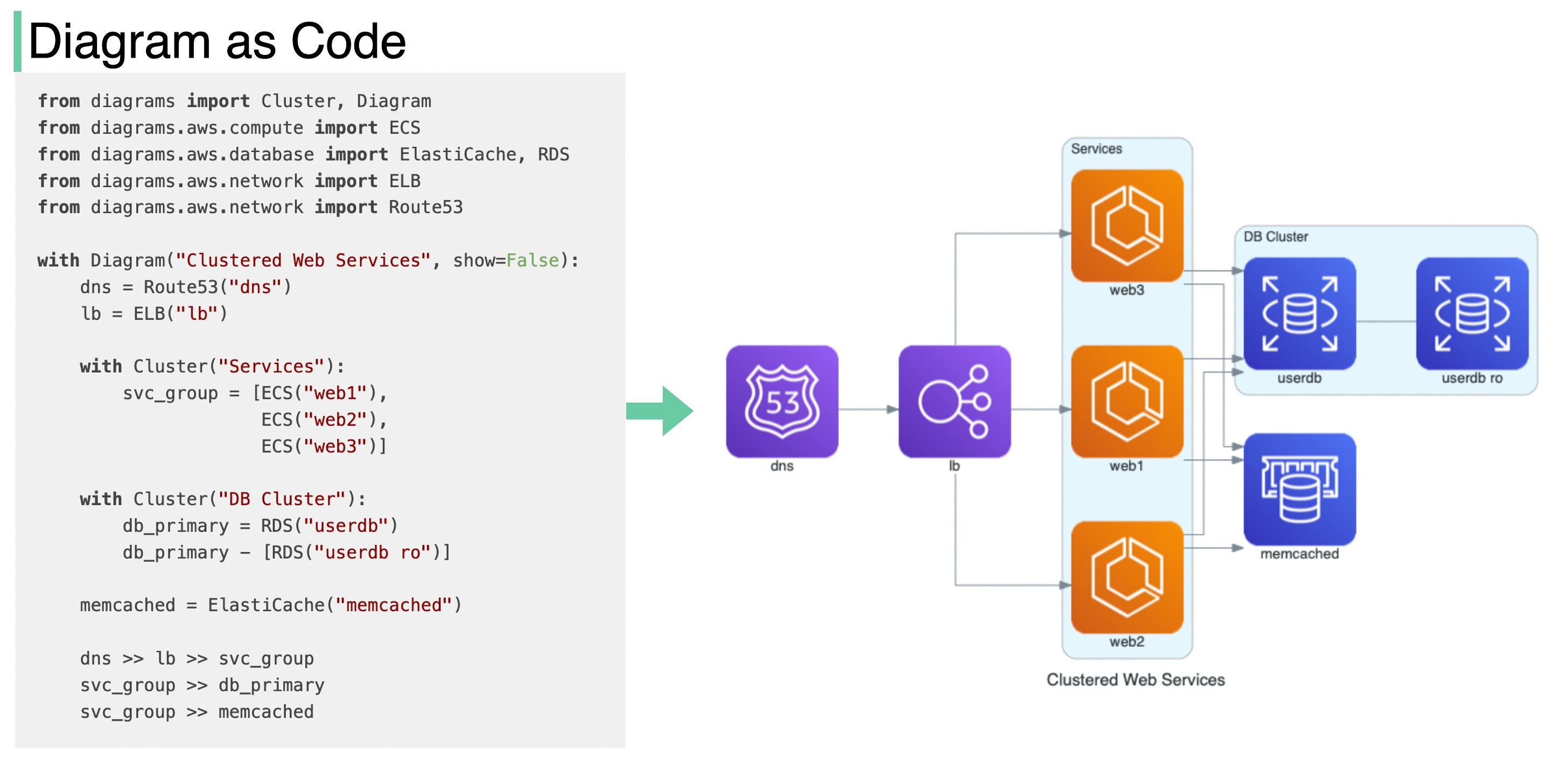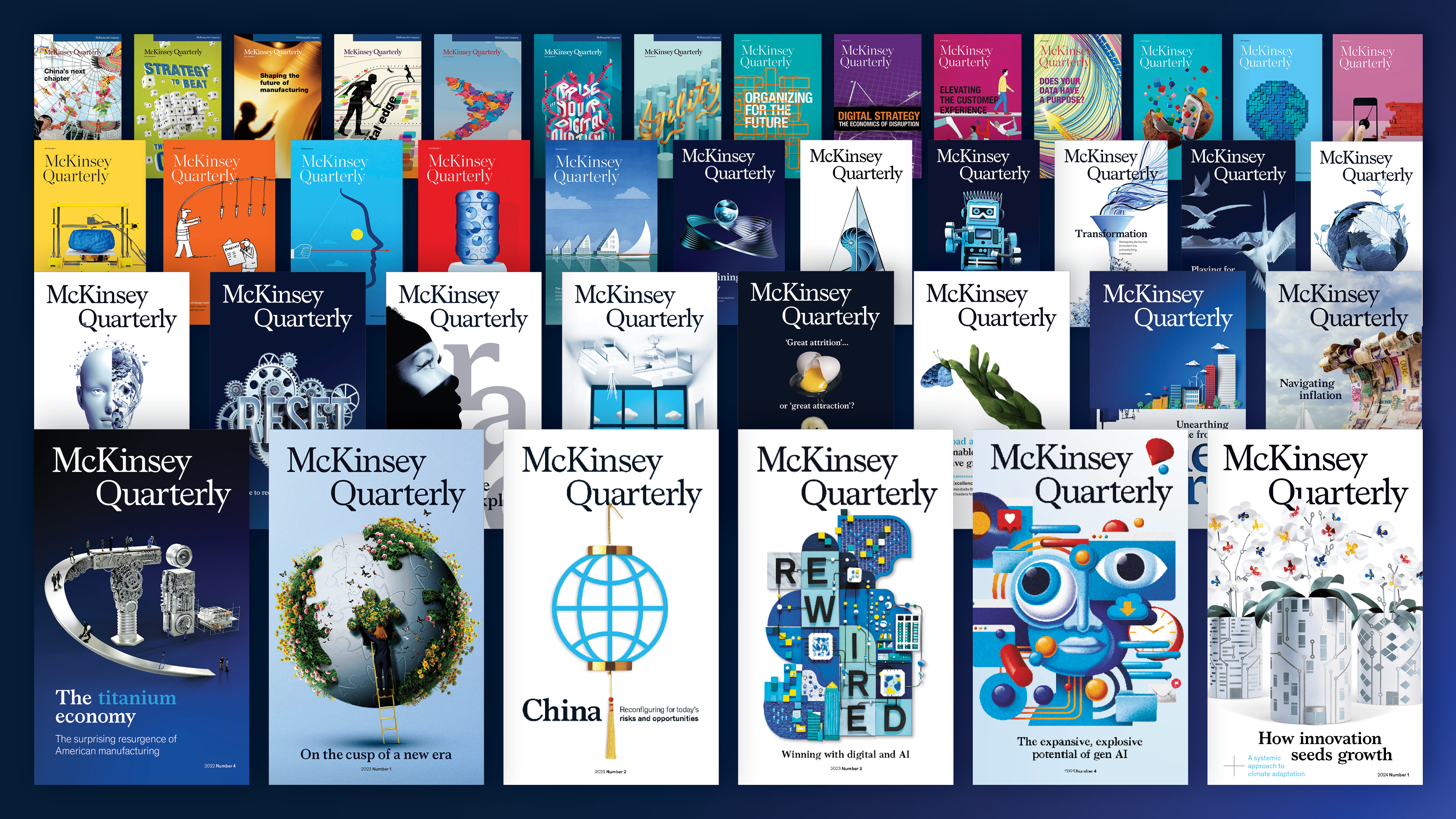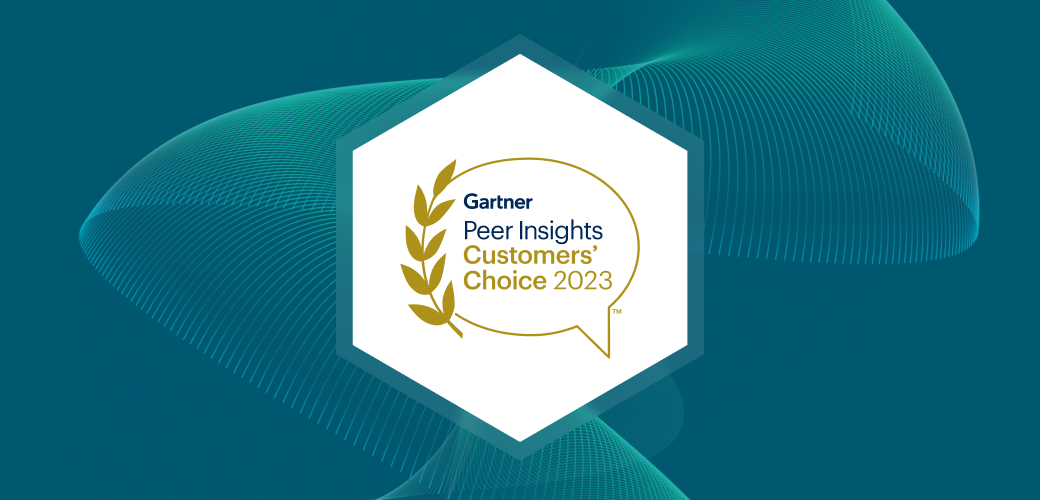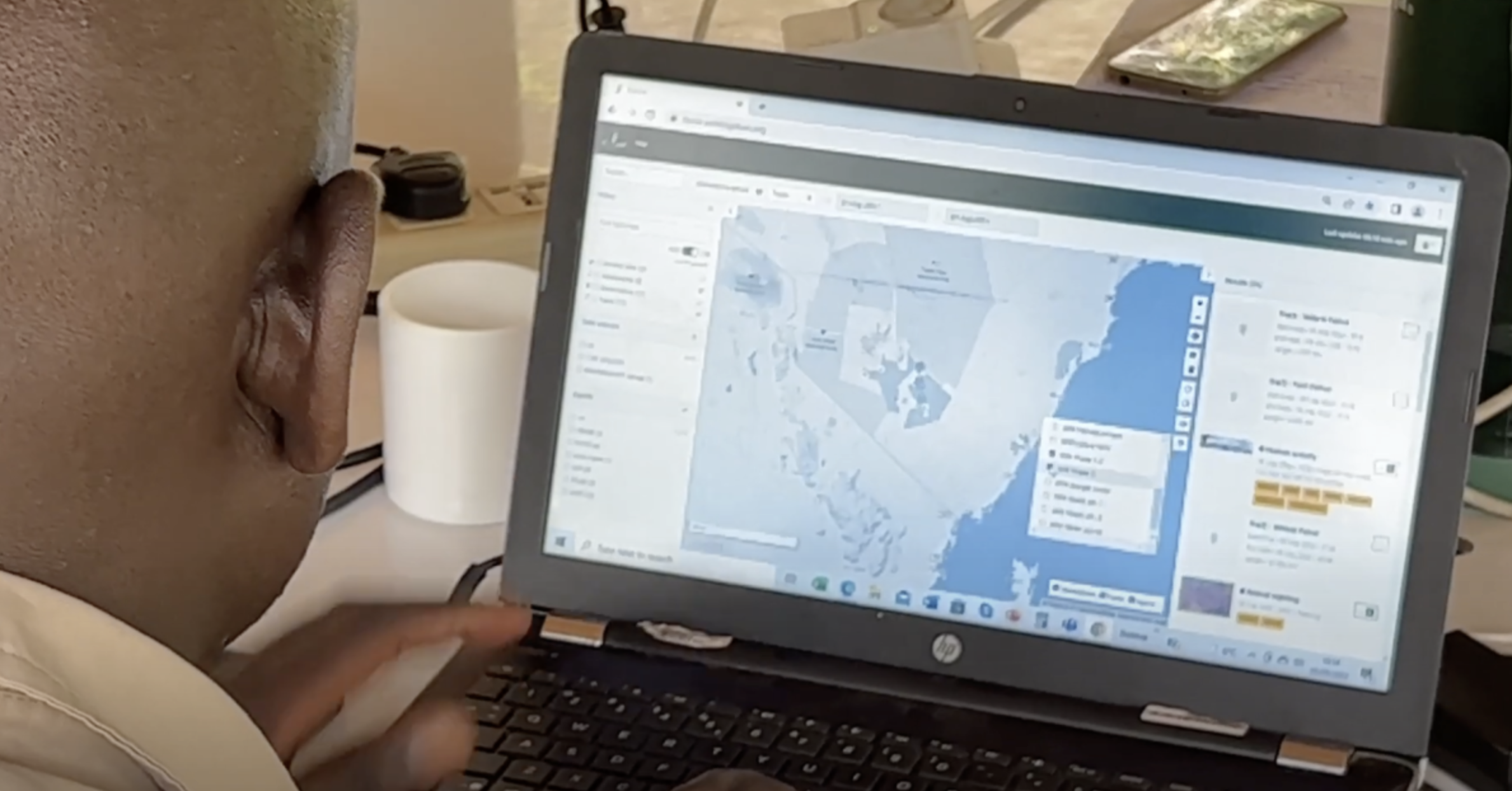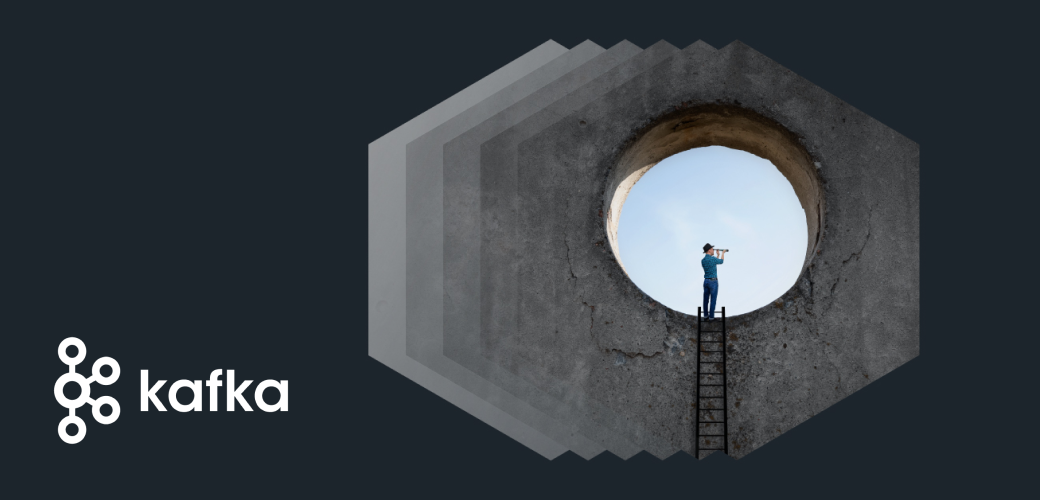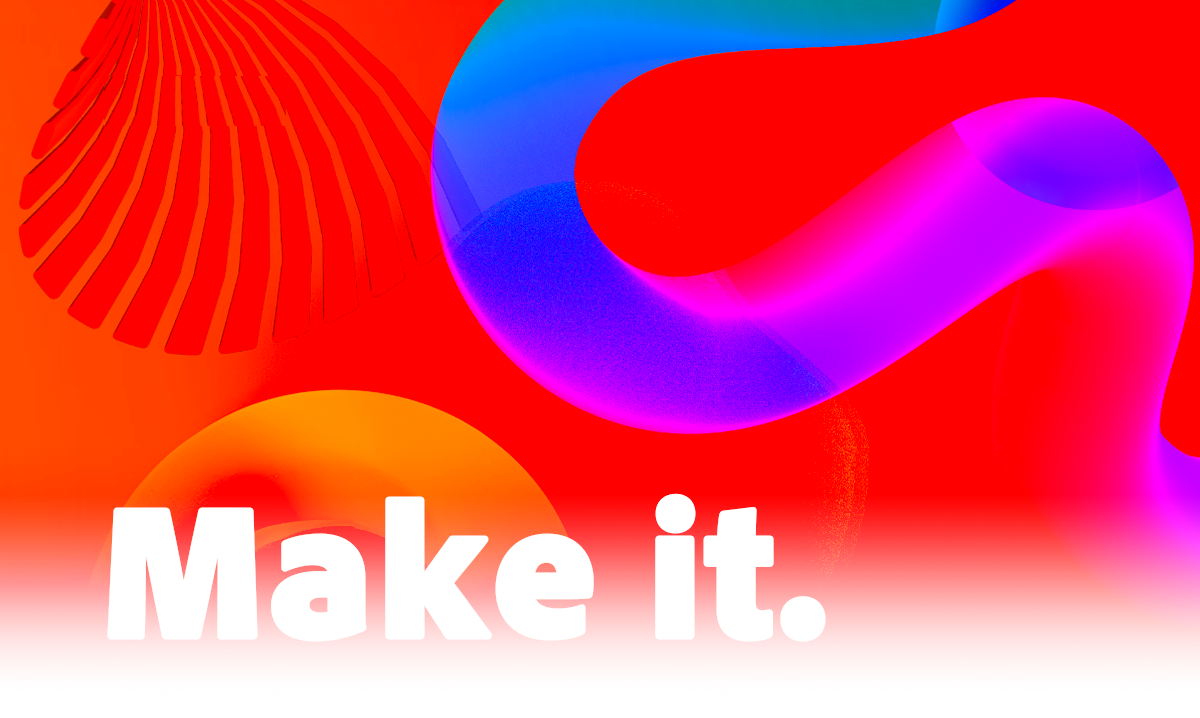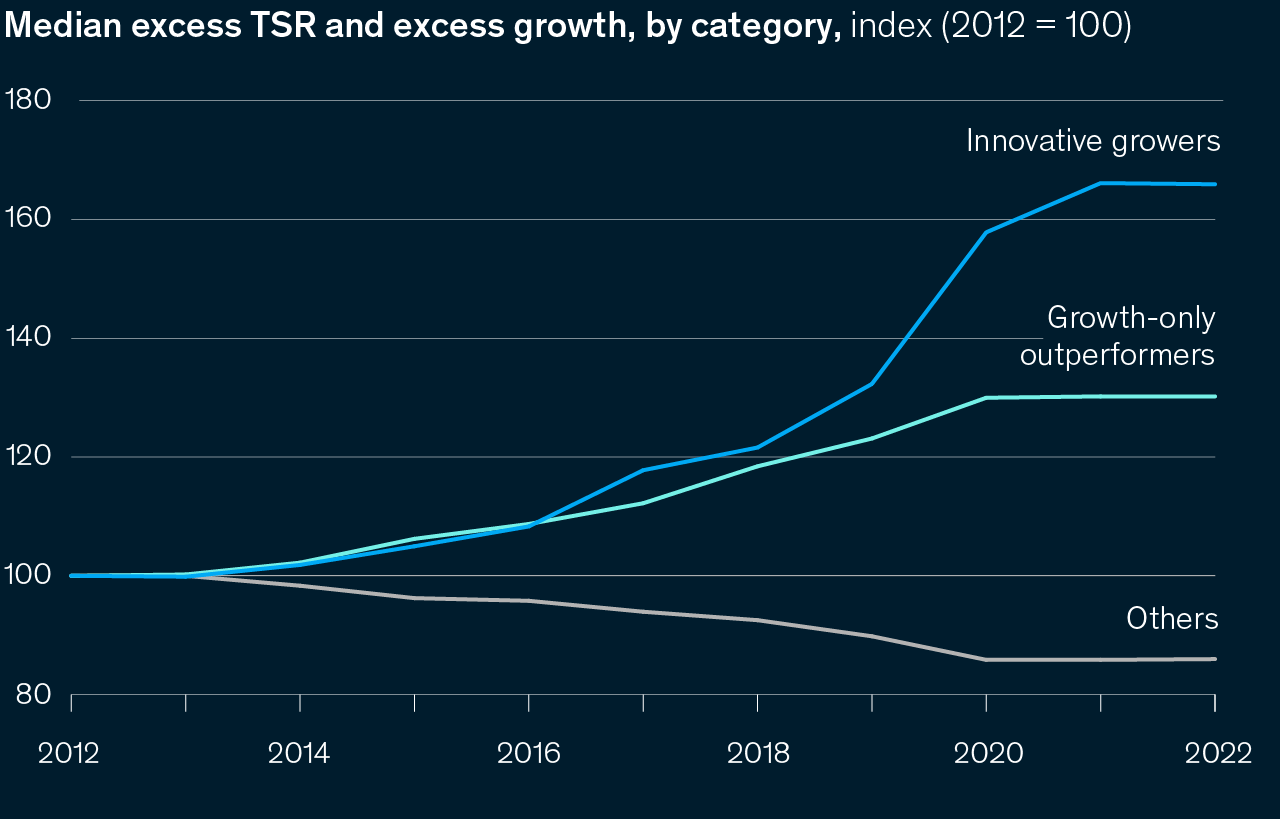Archives
- By thread 5369
-
By date
- June 2021 10
- July 2021 6
- August 2021 20
- September 2021 21
- October 2021 48
- November 2021 40
- December 2021 23
- January 2022 46
- February 2022 80
- March 2022 109
- April 2022 100
- May 2022 97
- June 2022 105
- July 2022 82
- August 2022 95
- September 2022 103
- October 2022 117
- November 2022 115
- December 2022 102
- January 2023 88
- February 2023 90
- March 2023 116
- April 2023 97
- May 2023 159
- June 2023 145
- July 2023 120
- August 2023 90
- September 2023 102
- October 2023 106
- November 2023 100
- December 2023 74
- January 2024 75
- February 2024 75
- March 2024 78
- April 2024 74
- May 2024 108
- June 2024 98
- July 2024 116
- August 2024 134
- September 2024 130
- October 2024 141
- November 2024 171
- December 2024 115
- January 2025 216
- February 2025 140
- March 2025 220
- April 2025 233
- May 2025 239
- June 2025 303
- July 2025 182
-
EP96: A cheat sheet for system design
EP96: A cheat sheet for system design
This week’s system design refresher: A cheat sheet for system designs Visualizing a SQL query Cloud Disaster Recovery Strategies Part-Time Opportunity: Tech Researcher & Writer at ByteByteGo Free Digital Download: The State of Streaming Data (Sponsored) Forwarded this email? Subscribe here for moreThis week’s system design refresher:
A cheat sheet for system designs
Visualizing a SQL query
Cloud Disaster Recovery Strategies
Part-Time Opportunity: Tech Researcher & Writer at ByteByteGo
Free Digital Download: The State of Streaming Data (Sponsored)
Based on an independent survey of 300 streaming data-savvy tech professionals, this report shows how streaming data is used today, the size and shape of workloads, challenges, popular tools and plans for future adoption.
You’ll see what your peers are doing with streaming data, including:
Top concerns preventing companies from adopting streaming data
Daily volume of streaming data based on workload types
Data retention policies in use
Core components of streaming data pipelines
Top client libraries, data processing tools and formats
Download the report for the full findings.
A cheat sheet for system designs
The diagram below lists 15 core concepts when we design systems. The cheat sheet is straightforward to go through one by one. Save it for future reference!
Requirement gathering
System architecture
Data design
Domain design
Scalability
Reliability
Availability
Performance
Security
Maintainability
Testing
User experience design
Cost estimation
Documentation
Migration plan
Visualizing a SQL query
SQL statements are executed by the database system in several steps, including:
Parsing the SQL statement and checking its validity
Transforming the SQL into an internal representation, such as relational algebra
Optimizing the internal representation and creating an execution plan that utilizes index information
Executing the plan and returning the results
Cloud Disaster Recovery Strategies
An effective Disaster Recovery (DR) plan is not just a precaution; it's a necessity.
The key to any robust DR strategy lies in understanding and setting two pivotal benchmarks: Recovery Time Objective (RTO) and Recovery Point Objective (RPO).
Recovery Time Objective (RTO) refers to the maximum acceptable length of time that your application or network can be offline after a disaster.
Recovery Point Objective (RPO), on the other hand, indicates the maximum acceptable amount of data loss measured in time.
Let's explore four widely adopted DR strategies:
Backup and Restore Strategy:
This method involves regular backups of data and systems to facilitate post-disaster recovery.Typical RTO: From several hours to a few days.
Typical RPO: From a few hours up to the time of the last successful backup.
Pilot Light Approach:
Maintains crucial components in a ready-to-activate mode, enabling rapid scaling in response to a disaster.Typical RTO: From a few minutes to several hours.
Typical RPO: Depends on how often data is synchronized.
Warm Standby Solution:
Establishes a semi-active environment with current data to reduce recovery time.Typical RTO: Generally within a few minutes to hours.
Typical RPO: Up to the last few minutes or hours.
Hot Site / Multi-Site Configuration:
Ensures a fully operational, duplicate environment that runs parallel to the primary system, enabling uninterrupted functionality.Typical RTO: Almost immediate, often just a few minutes.
Typical RPO: Extremely minimal, usually only a few seconds old.
Over to you: What factors would influence your decision to choose a DR strategy?
Part-Time Opportunity: Tech Researcher & Writer at ByteByteGo, Where Your Writing Teaches Millions
About ByteByteGo Newsletter:
The ByteByteGo newsletter is one of the largest and fastest-growing technology newsletters in the world, with over 500,000 readers. ByteByteGo also has a social media audience of over 2 million.
What You’ll Be Doing:Researching: You will delve deep into interesting tech blogs, tech talks, and insightful papers.
Writing: Crafting a compelling ~2000-word blog/newsletter that covers noteworthy tech blogs, tech talks, and papers, and incorporates your thoughts.
Editing: Collaborating and iterating with me to finalize the article.
Requirements:
Minimum 3 years of experience in building large-scale distributed systems.
Passionate about explaining complex topics with simple terms.
Compelling writing style.
Hours:
The workload is initially expected to be around 5-10 hours per week, with the potential to increase.
Pays a competitive hourly rate.
Perks of the Part-time Job
Impact: Your work will be seen by millions of people around the world and will hopefully positively impact them.
Flexibility: Enjoy flexible hours as the position is fully remote.
Interested? Send your resume/LinkedIn and a sample of writing to hi@bytebytego.com
We appreciate your application and assure you that we will review all submissions. Due to the number of applicants, unfortunately, we may not be able to respond to everyone.Like
Comment
Restack
© 2024 ByteByteGo
548 Market Street PMB 72296, San Francisco, CA 94104
Unsubscribe
by "ByteByteGo" <bytebytego@substack.com> - 11:35 - 27 Jan 2024 -
You can now enter the Remote Excellence Awards 2024 🏆 Prepare for the limelight!
You can now enter the Remote Excellence Awards 2024 🏆 Prepare for the limelight!
This is your personal invitation to enter our first ever Remote Excellence Awards, designed to showcase outstanding companies on their global employment journeyWe’re excited to announce the official launch of the Remote Excellence Awards 2024!
With not one, not two, but TEN prestigious categories, you have a unique opportunity to spotlight your company’s innovative practices and achievements.
Whether you’re pioneering in DE&I, mastering global compensation, or crafting cutting-edge talent strategies, there’s a category tailored for your expertise.
Not yet a customer of Remote? Not to worry! There are four categories open to everyone, so don't be shy. Just make sure you hit ‘send’ on your entry before the deadline on March 1, 2024 at 11:59PM UTC.
Good luck! Team Remote
Remote is the the global HR
platform you deserveOnboard, pay, and manage employees and contractors around the world with Remote. You focus on finding the best hires — we'll handle the rest.
.png?height=64&upscale=true&name=Youtube%20(5).png)

.png?height=64&upscale=true&name=twitter%20(4).png)
.png?height=64&upscale=true&name=instagram%20(1).png)
You received this email because you are subscribed to News & Offers from Remote Europe Holding B.V
Update your email preferences to choose the types of emails you receive.
Unsubscribe from all future emailsRemote Europe Holding B.V
Copyright © 2024 Remote Europe Holding B.V All rights reserved.
Kraijenhoffstraat 137A 1018RG Amsterdam The Netherlands
by "Remote" <hello@remote-comms.com> - 09:15 - 26 Jan 2024 -
Live now! API platform engineering fundamentals programme
Live now! API platform engineering fundamentals programme
The Tyk API platform engineering fundamentals programme on-demand version is now live!After the resounding success of our 2023 programme, which we delivered to over 700 participants, the Tyk API platform engineering fundamentals programme is back with a new, on-demand version - and it's live now!
Whether you're a seasoned developer or just starting in the tech world, our programme is designed to empower you with the skills and knowledge needed to excel in API platform engineering.
What's in store for you?

On demand content:
The programme is designed to be flexible, allowing you to access all materials and learn when it's most convenient.
Comprehensive curriculum:
Our six carefully crafted modules cover everything from API basics to advanced techniques.
Expert guests: Budha, your superstar host and industry expert, will guide you through the intricacies of API platform engineering alongside a selection of expert guests.

Community:
Join a vibrant community of learners, connect with like-minded individuals, and foster professional relationships.
Certification:
Validate your Tyk API platform engineering expertise upon completion of the programme.Get ready to embark on a transformative journey into the world of API platform engineering!
Tyk, 87a Worship Street, London, City of London EC2A 2BE, United Kingdom, +44 (0)20 3409 1911
by "Budhaditya Bhattacharya" <communities@tyk.io> - 09:02 - 26 Jan 2024 -
Fixing the health equity gap could be worth $1 trillion
The Shortlist
Four new insights
by "McKinsey CEO Shortlist" <publishing@email.mckinsey.com> - 04:42 - 26 Jan 2024 -
What is the board’s role in managing generative AI?
On Point
Questions that AI-savvy boards ask Brought to you by Liz Hilton Segel, chief client officer and managing partner, global industry practices, & Homayoun Hatami, managing partner, global client capabilities
•
The board’s role. Company boards are responsible for how generative AI (gen AI) is used at the companies they oversee. However, many board members are still unsure how to support executives grappling with the rapid changes unleashed by this nascent technology, explains McKinsey senior partner Alexander Sukharevsky, the global leader of QuantumBlack, AI by McKinsey. By asking management teams the right questions, boards can help organizations create value from gen AI while managing its risks.
— Edited by Jermey Matthews, editor, Boston
This email contains information about McKinsey's research, insights, services, or events. By opening our emails or clicking on links, you agree to our use of cookies and web tracking technology. For more information on how we use and protect your information, please review our privacy policy.
You received this newsletter because you subscribed to the Only McKinsey newsletter, formerly called On Point.
Copyright © 2024 | McKinsey & Company, 3 World Trade Center, 175 Greenwich Street, New York, NY 10007
by "Only McKinsey" <publishing@email.mckinsey.com> - 01:13 - 26 Jan 2024 -
Private markets, debunking myths about women in the workplace, innovation growth, and more reads for your downtime
Slide into the weekend with these insights Brought to you by Liz Hilton Segel, chief client officer and managing partner, global industry practices, & Homayoun Hatami, managing partner, global client capabilities
We’ve made it through another workweek. Find some time this weekend to relax and catch up on this week’s highlights on private markets in 2024, debunking myths about women in the workplace, innovation growers, and more.
QUOTE OF THE DAY
chart of the day
Ready to unwind?
—Edited by Joyce Yoo, editor, New York
Share these insights
Did you enjoy this newsletter? Forward it to colleagues and friends so they can subscribe too. Was this issue forwarded to you? Sign up for it and sample our 40+ other free email subscriptions here.
This email contains information about McKinsey’s research, insights, services, or events. By opening our emails or clicking on links, you agree to our use of cookies and web tracking technology. For more information on how we use and protect your information, please review our privacy policy.
You received this email because you subscribed to our McKinsey Quarterly Five Fifty alert list.
Copyright © 2024 | McKinsey & Company, 3 World Trade Center, 175 Greenwich Street, New York, NY 10007
by "McKinsey Daily Read" <publishing@email.mckinsey.com> - 12:47 - 26 Jan 2024 -
Inquiry Regarding Opportunities to Learn and Grow in Odoo ERP as a Business Analyst
Dear Odoo,
I hope this letter finds you well. I am reaching out to express my strong interest in learning and working with Odoo, and to explore potential opportunities within your esteemed organization. As a dedicated business analyst with a passion for growth and innovation, I am eager to expand my skill set by delving into the world of Odoo ERP systems.
Having amassed experience as a business analyst, I have honed my abilities to analyze processes and implement strategic solutions that drive efficiency and productivity. Now, I am eager to channel my expertise towards mastering Odoo and leveraging its capabilities to propel businesses forward.
Furthermore, as the founder of Leading Edge Business Solutions Pvt. Ltd., I am deeply committed to embracing leading technologies to enhance our services. Recognizing the immense potential of Odoo, I am keen on integrating it within our organization and fostering a team of proficient Odoo specialists.
My ultimate ambition is to become an Odoo Gold partner, and I am prepared to invest time, efforts to realize this goal. I am actively seeking sponsorships to facilitate the development of an Odoo team within my organization and pave the way for future success.
I am particularly interested in pursuing a remote position as an Odoo ERP Business System Analyst, as it aligns with my professional objectives and allows for flexibility in managing my commitments. I am confident that my blend of experience, dedication, and enthusiasm makes me a valuable asset to any team working with Odoo.
I would greatly appreciate the opportunity to discuss how my skills and aspirations can contribute to the objectives of your organization. I am available for a virtual meeting at your earliest convenience to delve into further details and explore potential avenues of collaboration.
Please find my LinkedIn profile attached for your reference. I eagerly await your response and the possibility of working together to drive innovation and success through Odoo.
Thank you
Best Regards,
Saqlain Abbas
Business Analyst
Leading Edge Business Solutions
Punjab, Pakistan
www.linkedin.com/in/saqlain-abbas-b59844163
by "saqlain abbas" <saqlainabbas518@gmail.com> - 03:15 - 25 Jan 2024 -
Forward Thinking on Europe’s existential crisis with Marco Buti
Listen in New from McKinsey & Company

Forward Thinking on Europe’s existential crisis with Marco Buti
Listen in Prefer audio? Listen to the podcast, and explore past episodes of the Forward Thinking podcast. Subscribe via Apple Podcasts, Google Podcasts, and Spotify.


This email contains information about McKinsey's research, insights, services, or events. By opening our emails or clicking on links, you agree to our use of cookies and web tracking technology. For more information on how we use and protect your information, please review our privacy policy.
You received this email because you subscribed to our McKinsey Global Institute alert list.
Copyright © 2024 | McKinsey & Company, 3 World Trade Center, 175 Greenwich Street, New York, NY 10007
by "McKinsey Global Institute" <publishing@email.mckinsey.com> - 02:41 - 25 Jan 2024 -
Women spend more of their lives in poor health than men. How can we improve that?
On Point
A new McKinsey Health Institute report Brought to you by Liz Hilton Segel, chief client officer and managing partner, global industry practices, & Homayoun Hatami, managing partner, global client capabilities
•
In sickness and in health. In 1800, people could expect to live an average of 30 years. The rise in life expectancy since then has been a big success story. Even so, women spend more of their lives in poor health and with degrees of disability than men, which reduces their earning potential, McKinsey Global Institute (MGI) director and senior partner Kweilin Ellingrud and coauthors explain. Improving women’s health could boost the global economy by at least $1 trillion annually by 2040, the McKinsey Health Institute (MHI) finds.
— Edited by Belinda Yu, editor, Atlanta
This email contains information about McKinsey's research, insights, services, or events. By opening our emails or clicking on links, you agree to our use of cookies and web tracking technology. For more information on how we use and protect your information, please review our privacy policy.
You received this newsletter because you subscribed to the Only McKinsey newsletter, formerly called On Point.
Copyright © 2024 | McKinsey & Company, 3 World Trade Center, 175 Greenwich Street, New York, NY 10007
by "Only McKinsey" <publishing@email.mckinsey.com> - 01:23 - 25 Jan 2024 -
🎉 Today is our 5th birthday - Discover the incredible growth story of Remote
🎉 Today is our 5th birthday - Discover the incredible growth story of Remote
Explore our major milestones over the years, including our expansion into new countries, the launch of Remote Talent, and our strategic partnership with Gusto. Get inspired by our journey!Exciting news - Remote is turning 5! As we celebrate this milestone, we invite you to learn about our incredible journey so far.
- In 2023, we took a significant step forward, establishing ourselves as the go-to Global HR Platform, featuring HRIS and Global Payroll!
- We've been a gateway, assisting tens of thousands to explore the world of remote work. But don’t just take our word for it! Hear what our customers have to say.
- Our Remote Connect event series has united people globally, with over twenty virtual meet-ups (PS you can watch all the sessions on-demand).
- The launch of Remote Talent has simplified the process for employers to connect with top-tier candidates from around the world.
- We proudly announced our partnership with Gusto giving small and medium sized businesses another way to hire, pay, and manage global teams with confidence!
- We've broadened our horizons, Remote is now operating in 86 countries.
- Along the way, we've won several awards that we’re mighty proud of.
Our achievements so far have been possible due to our dedicated team and the interest from remarkable individuals like you. Here's to the exciting journey ahead!
Ready to Shape the Future of Work?
If you've been considering how we can assist with your Global HR plans, now is the perfect time. Join us as we embark on an exciting phase of growth and innovation.
.png?height=64&upscale=true&name=Youtube%20(5).png)

.png?height=64&upscale=true&name=twitter%20(4).png)
.png?height=64&upscale=true&name=instagram%20(1).png)
You received this email because you are subscribed to News & Offers from Remote Europe Holding B.V
Update your email preferences to choose the types of emails you receive.
Unsubscribe from all future emailsRemote Europe Holding B.V
Copyright © 2024 Remote Europe Holding B.V All rights reserved.
Kraijenhoffstraat 137A 1018RG Amsterdam The Netherlands
by "Remote" <hello@remote-comms.com> - 12:15 - 25 Jan 2024 -
Mastering Design Principles - SOLID
Mastering Design Principles - SOLID
In the fast-paced world of software development, writing robust, maintainable, and scalable code is critically important. One way to achieve this is by following a set of fundamental design principles known as the SOLID principles. These principles provide a clear framework for crafting software that is easy to understand, extend, and maintain. Forwarded this email? Subscribe here for moreLatest articles
If you’re not a subscriber, here’s what you missed this month.
To receive all the full articles and support ByteByteGo, consider subscribing:
In the fast-paced world of software development, writing robust, maintainable, and scalable code is critically important. One way to achieve this is by following a set of fundamental design principles known as the SOLID principles. These principles provide a clear framework for crafting software that is easy to understand, extend, and maintain.
In this newsletter, we will explore the SOLID principles, examining each component in detail. We will review practical implementation guidance and best practices for applying them.
Now, let's begin our exploration with a brief overview of the SOLID principles first.
A Brief Overview
The SOLID principles are a set of five fundamental design principles that were introduced by Robert C. Martin to guide software developers in creating maintainable, scalable, and flexible software systems. These principles, when followed, contribute to the development of software that is easier to understand, modify, and extend over time.
The SOLID acronym stands for:
Importance of Design Principles in Software Development
Design principles, such as the SOLID principles, play a pivotal role in the software development process for several reasons:
Maintainability: Following sound design principles makes code more maintainable. When code is well-structured and adheres to these principles, it becomes easier to identify and fix issues, add new features, and make improvements without causing unintended consequences.
Scalability: Well-designed software is scalable. It can accommodate changes and growth in requirements without requiring extensive rework or becoming increasingly complex.
Code Reusability: Adhering to design principles often leads to code that is more reusable. Reusable components save time and effort in development and testing.
Collaboration: Design principles provide a common framework for developers to work within. This common understanding promotes collaboration and reduces misunderstandings among team members.
Reduced Bugs and Pitfalls: Following design principles helps to identify and mitigate common programming pitfalls and design flaws. This results in fewer bugs and more robust software.
Future-Proofing: Well-designed software can adapt to changing requirements and technologies. It's an investment in the long-term viability of the software product.
Now, let's deep dive into each component of the SOLID principles.
Single Responsibility Principle (SRP)
The “S” in the SOLID principles stands for the Single Responsibility Principle (SRP), which states that a class should have only one reason to change or, in other words, it should have a single, well-defined responsibility or job within a software system.
Illustrating a Violation of SRP
Let's take a look at a Java code example below that clearly violates the Single Responsibility Principle (SRP) principle:
public class Employee { private String name; private double salary; public void calculateSalary() { // definition } public void generatePayrollReport() { // definition } }In the above example, the Employee class has two responsibilities: calculating an employee's salary and generating a payroll report. This violates the SRP because it has more than one reason to change.
Fixing the Violation (SRP)
To address the violation of the Single Responsibility Principle (SRP) in our previous example, let's refactor the code to separate concerns and ensure that each class has a single, well-defined responsibility. We'll create distinct classes for calculating an employee's salary and generating a payroll report:
public class Employee { private String name; private double salary; public void calculateSalary() { // definition } } public class PayrollReportGenerator { public void generatePayrollReport(Employee employee) { // definition } }In the refactored solution, the responsibilities of calculating the salary and generating a payroll report have been separated into two distinct classes (Employee and PayrollReportGenerator), each with a single responsibility. This adheres to the SRP.
Let’s take a look at the visual representation of the classes and implementation of the single responsibility principle (SRP).
Keep reading with a 7-day free trial
Subscribe to ByteByteGo Newsletter to keep reading this post and get 7 days of free access to the full post archives.
A subscription gets you:
An extra deep dive on Thursdays Full archive Many expense it with team's learning budget Like
Comment
Restack
© 2024 ByteByteGo
548 Market Street PMB 72296, San Francisco, CA 94104
Unsubscribe
by "ByteByteGo" <bytebytego@substack.com> - 11:37 - 25 Jan 2024 -
A new issue of the McKinsey Quarterly is here
Sign up now for instant access The innovation imperative
The newest issue of the McKinsey Quarterly explores the innovation imperative—and the keys to making your company an innovative grower. In our cover story, “Innovative growers: A view from the top,” authors Matt Banholzer, Rebecca Doherty, Alex Morris, and Scott Schwaitzberg uncover research that shows a focus on aspiration, activation, and execution can help companies out-innovate and outgrow peers.
This edition is available in an immersive online reading experience we’ve recently unveiled for our flagship publication. Sign up for a free digital Quarterly membership to access it.A membership to the digital edition of the McKinsey Quarterly also includes downloads of nearly 70 of our top reports in the McKinsey Insights Store as well as access to all four of this year’s digital issues of the Quarterly.
This email contains information about McKinsey's research, insights, services, or events. By opening our emails or clicking on links, you agree to our use of cookies and web tracking technology. For more information on how we use and protect your information, please review our privacy policy.
You received this email because you signed up for a McKinsey Quarterly digital membership.
Manage subscriptions | Unsubscribe me from McKinsey Quarterly digital membership
Copyright © 2024 | McKinsey & Company, 3 World Trade Center, 175 Greenwich Street, New York, NY 10007
by "McKinsey & Company" <publishing@email.mckinsey.com> - 07:24 - 25 Jan 2024 -
It’s official: New Relic is a 2023 Gartner® Peer Insights™ Customers’ Choice
New Relic
 January 2024
January 2024New Relic a 2023 Gartner® Peer Insights™ Customers’ Choice for APM and o11y We’re thrilled to see how much you’ve been able to drive business forward with New Relic, and honored to be part of your success. Engineers like you are the reason we constantly push for greatness in our platform, and we couldn’t do it without you.
Learn more  In the nonprofit space, budget is critical. This Dutch NGO specialising in the wildlife space, uses New Relic to help improve alerting and proactively find issues before they happen.
In the nonprofit space, budget is critical. This Dutch NGO specialising in the wildlife space, uses New Relic to help improve alerting and proactively find issues before they happen.
Navigating the digital landscape is akin to exploring a vast ocean: to successfully reach the desired destination, every element of the journey must align perfectly. The end-user experience is the heartbeat of digital interaction and determines how customers perceive and engage with your brand. In this blog, you'll learn why improving the end-user experience is essential for business growth.
Useful reads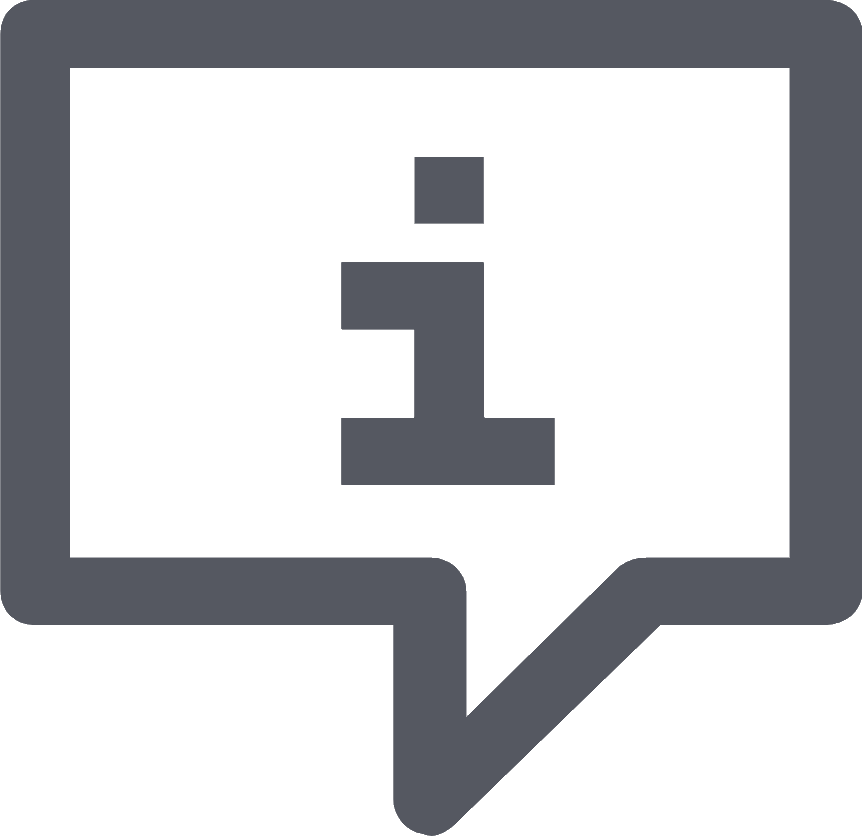 Instantly spot anomalies in key metrics across all Kafka client components and identify bottlenecks that impact data flow and latency with New Relic APM 360’s new Kafka UI.Upcoming Events
Instantly spot anomalies in key metrics across all Kafka client components and identify bottlenecks that impact data flow and latency with New Relic APM 360’s new Kafka UI.Upcoming Events EMEA - New Relic user meetups are back!
EMEA - New Relic user meetups are back!
New Relic engineers are coming to a city near you in March! Join us and other local users in your city for an afternoon of food, drinks, swag and of course - data talk! Learn best practices on mastering log data, parsing and obfuscation, converting events-to-metrics for efficient long-term data analysis, and managing SLOs and SLIs with our recommendation engine and personalised views.
Then we’ll throw it back to the year 2013 with our version of Flappy Birds. Bring your a-game to compete in an interactive session on New Relic powered by browser, APM, and logs. We’ll show a leaderboard of the results and there will be prizes aplenty! So come along to be in it to win it.
Happening in Dubai, Stockholm, Munich, Madrid, Dublin, London, Manchester, Berlin & Warsaw
Register now to secure your spot!
New Relic End-of-Life Updates
Synthetics - Muted Monitor Status (February 29, 2024)
- Alerts for Synthetic monitors will no longer have a muted status. The only supported statuses will be enabled or disabled.
- Muted synthetic monitors will be changed to Enabled on February 29.
- You should use Muting Rules to prevent notifications or Monitor Downtime configurations to stop synthetic monitor execution.
- Failing to convert a muted monitor into a Muting Rule or Monitor Downtime configuration could result in unnecessary notifications being sent.
- For more information, please see here.
Synthetics Runtime (February, 2024)
- Monitors that have not been upgraded to the new runtime yet will be upgraded.
- For more information please see: Synthetics public monitors: IP changes and runtime upgrades and the Runtime transition guide.
Need help? Let's get in touch.



This email is sent from an account used for sending messages only. Please do not reply to this email to contact us—we will not get your response.
This email was sent to info@learn.odoo.com Update your email preferences.
For information about our privacy practices, see our Privacy Policy.
Need to contact New Relic? You can chat or call us at +44 20 3859 9190.
Strand Bridge House, 138-142 Strand, London WC2R 1HH
© 2024 New Relic, Inc. All rights reserved. New Relic logo are trademarks of New Relic, Inc

by "New Relic" <emeamaketing@newrelic.com> - 06:06 - 25 Jan 2024 -
Embracing change in real estate with generative AI
Re:think
Generative AI can transform real estate FRESH TAKES ON BIG IDEAS
ON GEN AI IN REAL ESTATE
Why generative AI has put the real estate industry on the cusp of changeVaibhav Gujral
Real estate has been slower than other industries to adopt analytics for decision making and day-to-day operations. Historically, less data has existed and been accessed in real estate compared with other industries. After all, it has traditionally been a business about buildings and their physical use, with less of a focus on the adoption of digital tools.
But generative AI (gen AI) has the potential to change the real estate industry paradigm for several reasons. First, actors in the industry are better prepared to adopt this wave of technological advancement than they were with previous advancements. Today, there is vastly more technology embedded in every aspect of a building, from building management systems to elevators to apps that interface with staff and building users. Modern skyscrapers have the potential to generate millions of data points every day that can be aggregated, processed, and analyzed for superior decision making. Furthermore, real estate organizations have built infrastructure to help capture and harness the potential of this data by making investments in data and technology over the past five to seven years.
Second, the industry used to face a big barrier when it came to experimenting and using AI models. To even get to a proof of concept, companies had to invest heavily in data, infrastructure, and talent. But gen AI has democratized access, as tech firms and venture capital–backed start-ups have made big investments in large language models that can be tailored and adapted to various contexts. That has greatly reduced the cost and time it takes to deploy gen AI models, enabling brokerage firms, title companies, lenders, and real estate investors and operators to experiment at an unprecedented pace.
This technology is coming to fruition at a crucial time for the real estate industry as companies think about what the market truly demands and focus on assets’ operating performance. Using the latest analysis from the McKinsey Global Institute, we believe that gen AI could generate $110 billion to $180 billion or more in value for the real estate industry. Most aspects of the real estate value chain should have applications for gen AI, starting with how buildings are designed and constructed. That doesn’t mean that gen AI will come up with something a human couldn’t have. But it can run many iterations, customizations, and combinations that may be cost or time prohibitive for an architectural or engineering firm to perform. Gen AI has the potential to make it easier to personalize buildings, tailor spaces to end user needs, and incorporate learning from existing spaces into new ones.
Marketing content for new listings can be largely automated using gen AI, and the content can be hyper-personalized for each audience. A home could be virtually staged with modern, minimalist design, for instance, and a listing description could be customized to match the preferences of a specific member of the target buyer audience. Gen AI could also automate communications between building users and staff. The technology, for example, could be used to help tackle maintenance requests or rent payment questions in an entirely automated way, freeing up building staff to focus on more complex tasks that require human intervention.“We believe that gen AI could generate $110 billion to $180 billion or more in value for the real estate industry.”
To get started, real estate companies will need to accelerate their data and analytics transformations. Step one is creating advantage with proprietary data through aggregation and normalization of relevant data sets from both the organization’s own systems and third-party service providers. This data should be a means to an end, enabling specific decisions and use cases that can deliver tangible business value.
The next step is thinking differently about talent and capabilities. Just as real estate companies compete for the best design, construction, investing, and asset and property management talent, so they will want to think about data scientists and technologists as critical to their competitive edge.
Step three is reconfiguring analog business processes to data- and analytics-informed processes. Changes in business workflow will be required to understand when to take inputs from a gen AI model versus when there should be human oversight. The key is to start experimenting early and to build the internal skills and capacity needed to benefit from gen AI.
Are the rewards worth the effort? I think that question is going to become irrelevant in the next five to ten years, as many processes and workflows across the industry are likely to be either greatly enhanced or automated by gen AI. The more relevant question is, “How can real estate organizations not just upgrade but completely reimagine what they do?” What would you do differently, for example, if a significant amount of middle-office and back-office activities of your real estate company could be automated? How would you reallocate that investment into creating superior customer experiences and more dynamic, responsive, and environmentally conscious buildings? There is no question that the technology will improve exponentially over the coming years. Competitive advantage will be captured by those who have learned how to harness gen AI’s power in every aspect of what they do—that includes embracing a future where long-sacred operating models and processes can be reimagined.ABOUT THIS AUTHOR
Vaibhav Gujral is a senior partner in McKinsey’s New York office.
MORE FROM THIS AUTHOR
UP NEXT
Marc Brodherson on the future of advertising
Advertising is undergoing a massive sea change, because consumers are spending time with ad-supported media differently and many new “media” companies are competing for their attention and advertisers’ wallets. In response, the industry is pivoting in unprecedented and transformative ways.
This email contains information about McKinsey’s research, insights, services, or events. By opening our emails or clicking on links, you agree to our use of cookies and web tracking technology. For more information on how we use and protect your information, please review our privacy policy.
You received this email because you subscribed to our McKinsey Quarterly alert list.
Copyright © 2024 | McKinsey & Company, 3 World Trade Center, 175 Greenwich Street, New York, NY 10007
by "McKinsey Quarterly" <publishing@email.mckinsey.com> - 03:35 - 24 Jan 2024 -
Leaving the CEO role for new pastures is tough. Here’s how to get it right.
On Point
How great CEOs step down Brought to you by Liz Hilton Segel, chief client officer and managing partner, global industry practices, & Homayoun Hatami, managing partner, global client capabilities
•
Start early. Succession planning is crucial for CEOs, but it can get short shrift as leaders get caught up in the day-to-day grind, McKinsey senior partner Kurt Strovink shares in a recent episode of the podcast series Inside the Strategy Room. CEOs should think about who will succeed them from day one of their tenure, not because they’re itching to leave, but because it’s helpful to develop at least three potential internal candidates who can fill the CEO’s shoes, partner Blair Epstein says.
•
Last 100 days. Departing CEOs should consider making a 100-day plan for the end of their tenure, allowing for a deft handover of both work and relationships to the new boss. Some CEOs choose to take a gap year or half year after stepping down, helping them “fend off the offers that they start getting right away and to double down on health, sleep, and relationships,” says senior partner Carolyn Dewar, coauthor of the bestselling book CEO Excellence. Learn what leading CEOs do when handing over the reins.
— Edited by Jana Zabkova, senior editor, New York
This email contains information about McKinsey's research, insights, services, or events. By opening our emails or clicking on links, you agree to our use of cookies and web tracking technology. For more information on how we use and protect your information, please review our privacy policy.
You received this newsletter because you subscribed to the Only McKinsey newsletter, formerly called On Point.
Copyright © 2024 | McKinsey & Company, 3 World Trade Center, 175 Greenwich Street, New York, NY 10007
by "Only McKinsey" <publishing@email.mckinsey.com> - 01:36 - 24 Jan 2024 -
อย่าพลาด: Make it.
Adobe
พบกับประสบการณ์สร้างสรรค์จากอะโดบี สําหรับผู้เชี่ยวชาญและทีมงานของคุณ
19 March
Eastin Grand Phayathai Hotel
ด้วยความร้อนแรงของ Generative AI ซึ่งมุ่งเน้นการทํางาน
ร่วมกันเป็นแนวทางใหม่สำหรับการสร้างสรรค์ผลงาน ที่จะ
ทำให้ทีมสร้างสรรค์ก้าวเข้าสู่ยุคฟื้นฟูศิลปวิทยาสมัยใหม่
ด้วยความร้อนแรงของ Generative AI ซึ่งมุ่งเน้นการทํางาน
ร่วมกันเป็นแนวทางใหม่สำหรับการสร้างสรรค์ผลงาน ที่จะ
ทำให้ทีมสร้างสรรค์ก้าวเข้าสู่ยุคฟื้นฟูศิลปวิทยาสมัยใหม่
เข้าร่วมงานกับเราเพื่อรับประสบการณ์จากอะโดบี
งานนี้สำหรับผู้ได้รับเชิญเท่านั้น
คุณจะได้เรียนรู้จากผู้เชี่ยวชาญที่มีความคิดสร้างสรรค์
สัมผัสประสบการณ์โดยตรงเกี่ยวกับภูมิทัศน์
ความคิดสร้างสรรค์ใหม่ ๆ และพบปะเพื่อนที่มีความคิด
คล้ายกัน ในพื้นที่ที่ทํางานร่วมกันพร้อมความสนุกสนาน
รายละเอียดสำหรับงานนี้จะมีมาในเร็ว ๆ นี้
ที่นั่งมีจำนวนจำกัด ลงทะเบียนวันนี้Please reply to Norman Lim to request for an English version of the invite.
Adobe และโลโก้ของ Adobe เป็นเครื่องหมายการค้าจดทะเบียน หรือเครื่องหมายการค้าของ Adobe ที่จดทะเบียนในสหรัฐอเมริกา และ/หรือประเทศอื่นๆ รายชื่อต่อไปนี้ครอบคลุมเครื่องหมายการค้าของ Adobe ส่วนใหญ่ในตลาด หากต้องการดูรายชื่อเครื่องหมายการค้าทั้งหมดโปรดคลิกดูที่ Adobe List of Trademarks ได้ เครื่องหมายการค้าทั้งหมดถือเป็นทรัพย์สินของผู้เป็นเจ้าของที่ดำเนินการจดทะเบียนไว้
โดยการคลิกที่ลิงก์บางลิงก์ในอีเมลฉบับนี้ คุณจะได้รับการส่งต่อไปยังแบบฟอร์มที่จะกรอกข้อมูลบางส่วนที่เกี่ยวกับข้อมูลติดต่อของคุณไว้แล้ว
อีเมลการตลาดนี้ถูกส่งจาก Adobe Systems Software Ireland Limited, 4‑6 Riverwalk, Citywest Business Park, Dublin 24, Ireland
คลิกที่นี่เพื่อ ยกเลิกการรับอีเมล หรือ ส่งคำร้องเพื่อขอยกเลิกการรับอีเมลไปยังที่อยู่ด้านบน โปรดอ่าน นโยบายความเป็นส่วนตัวของ Adobe
เพื่อเป็นการยืนยันการส่ง โปรดเพิ่มที่อยู่อีเมลชื่อ demand@info.adobe.com เข้าไปในสมุดรายชื่อ รายชื่อติดต่อ หรือรายการผู้ส่งที่ปลอดภัย
หากคุณต้องการร้องเรียนเกี่ยวกับประเด็นเรื่องความเป็นส่วนตัวของข้อมูล โปรดส่งอีเมลไปยัง privacy@adobe.com
เปิดอ่านในเว็บเบราว์เซอร์
by "Adobe Creative Cloud for Business" <demand@info.adobe.com> - 10:02 - 23 Jan 2024 -
Tire Pressure Monitoring System - Keep Your Fleet Safe on the Road.
Tire Pressure Monitoring System - Keep Your Fleet Safe on the Road.
TPMS software provides analytics to enhance vehicle performance and prevent accidents.Eliminate the need for manual tire pressure checks. Know tire health and escalate safety.
Find out what makes our software stand out from the crowd
Compatible with any TPMS
sensor
Our software is flexible to work with any type of tire pressure monitoring sensor. Let your clients have the comfort of choosing the sensor according to their needs.

Tire Pressure Monitoring
Fleet managers can ensure that their vehicles always run on properly inflated tires, reducing the risk of accidents caused by underinflated or over-inflated tires.

Tire Temperature Monitoring
Fleet managers can identify tires that are operating at high temperatures and take corrective action to reduce heat buildup, thus extending tire life and reducing costs.

Real-time monitoring
TPMS constantly monitors tire pressure and temperature and sends real-time alerts if the pressure or temperature drops or rises below a certain threshold.

Empower your clients with an advanced tire pressure monitoring system

Uffizio Technologies Pvt. Ltd., 4th Floor, Metropolis, Opp. S.T Workshop, Valsad, Gujarat, 396001, India
by "Sunny Thakur" <sunny.thakur@uffizio.com> - 07:00 - 23 Jan 2024 -
Don’t miss our webinar on Prompt-Driven Efficiencies
Don’t miss our webinar on Prompt-Driven Efficiencies
Next webinar in Intel’s GenAI series


Prompt-Driven Efficiencies in LLMs
Wednesday, January 24, 2024 10:00am – 11:00am PT
Register for webinar 


Unlock the Potential of Prompt-driven Efficiencies in LLMs
It’s no secret that Large Language Models (LLMs) come with many challenges. Through prompt economization and in-context learning, we can address two significant challenges: model hallucinations and high compute costs.
We will explore creative strategies for optimizing the quality and compute efficiency of LLM applications. These strategies not only make LLM applications more cost-effective, but they also lead to improved accuracy and user experiences. We will discuss the following techniques:
- Prompt economization
- Prompt engineering
- In-context learning
- Retrieval augmented generation
Join us on Wednesday, January 24, 2024 10:00am – 11:00am PT to learn about these smart and easy ways to make your LLM applications more efficient.
Register 
Eduardo Alvarez
Senior AI Solutions Engineer at Intel, specializing in architecting AI/ML solutions, MLOps, and deep learning.

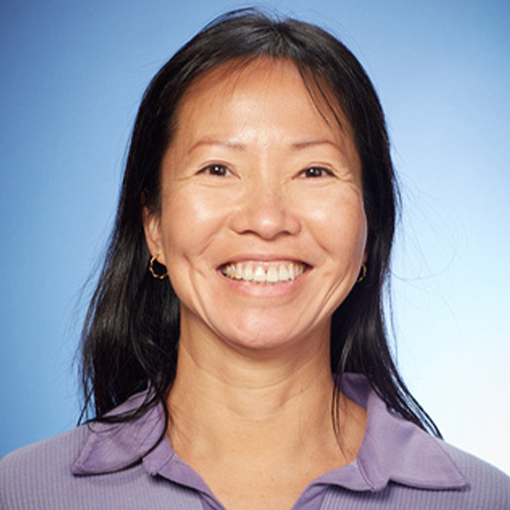
Sancha Huang Norris (moderator)
Generative AI Marketing Lead at Intel's Data Center and AI Business Unit

Our Generative AI series is just getting started. Stay tuned for more details on our 2024 webinar calendar.
This was sent to info@learn.odoo.com. If you forward this email, your contact information will appear in any auto-populated form connected to links in this email.
To view and manage your marketing-related email preferences with Intel, please click here.© 2024 Intel Corporation
Intel Corporation, 2200 Mission College Blvd., M/S RNB4-145, Santa Clara, CA 95054 USA. www.intel.comPrivacy | Cookies | *Trademarks | Unsubscribe | Manage Preferences
by "Intel Corporation" <intel@plan.intel.com> - 04:03 - 23 Jan 2024 -
You’re outgrowing your peers—but are you out-innovating them as well?
Intersection
Get your briefing In the face of constant disruptions, leading companies excel at both innovation and growth—and outperform their peers in the process, say McKinsey’s Matt Banholzer, Rebecca Doherty, Alex Morris, and Scott Schwaitzberg. Fostering an innovative culture and focusing on a few essentials can help organizations graduate from a growth-only mindset to one that supports innovative growth.
Share these insights
Did you enjoy this newsletter? Forward it to colleagues and friends so they can subscribe too. Was this issue forwarded to you? Sign up for it and sample our 40+ other free email subscriptions here.
This email contains information about McKinsey’s research, insights, services, or events. By opening our emails or clicking on links, you agree to our use of cookies and web tracking technology. For more information on how we use and protect your information, please review our privacy policy.
You received this email because you subscribed to our McKinsey Quarterly Five Fifty alert list.
Copyright © 2024 | McKinsey & Company, 3 World Trade Center, 175 Greenwich Street, New York, NY 10007
by "McKinsey Quarterly Five Fifty" <publishing@email.mckinsey.com> - 02:06 - 23 Jan 2024 -
Join me on Thursday for Maximising Observability with New Relic Logs
Hi MD,
Liam, Manager of Customer Training at New Relic University, here.
Are you getting the most from your log data when it comes to troubleshooting and observability? Are they easy-to-use or accessible when you need them?
If you'd like to improve how you use and work with your logs, you can register to attend the free online workshop I'll be hosting on 25th January at 10 am GMT/ 11 am CET- Maximising Observability with New Relic Logs. In this hands-on 90-minute workshop, we will walk you through the different ways to bring log data to New Relic, harness your log data for different use cases, including parsing, filtering, or dropping logs to match your needs.
We will also be showcasing our newest release ‘Logs Live Archives’. We will demo how to manage compliance risks and comply with regulatory requirements while showcasing the way you handle long-term log storage and analysis, streamlining the process into a few simple steps.
You can find the full agenda on the registration page here. While we recommend attending the hands-on workshop live, you can also register to receive the recording.
I hope to see you then,
Liam HurrellManager, Customer TrainingNew Relic
This email was sent to info@learn.odoo.com as a result of subscribing or providing consent to receive marketing communications from New Relic. You can tailor your email preferences at any time here.Privacy Policy © 2008-24 New Relic, Inc. All rights reserved
by "Liam Hurrell, New Relic" <emeamarketing@newrelic.com> - 07:26 - 23 Jan 2024
